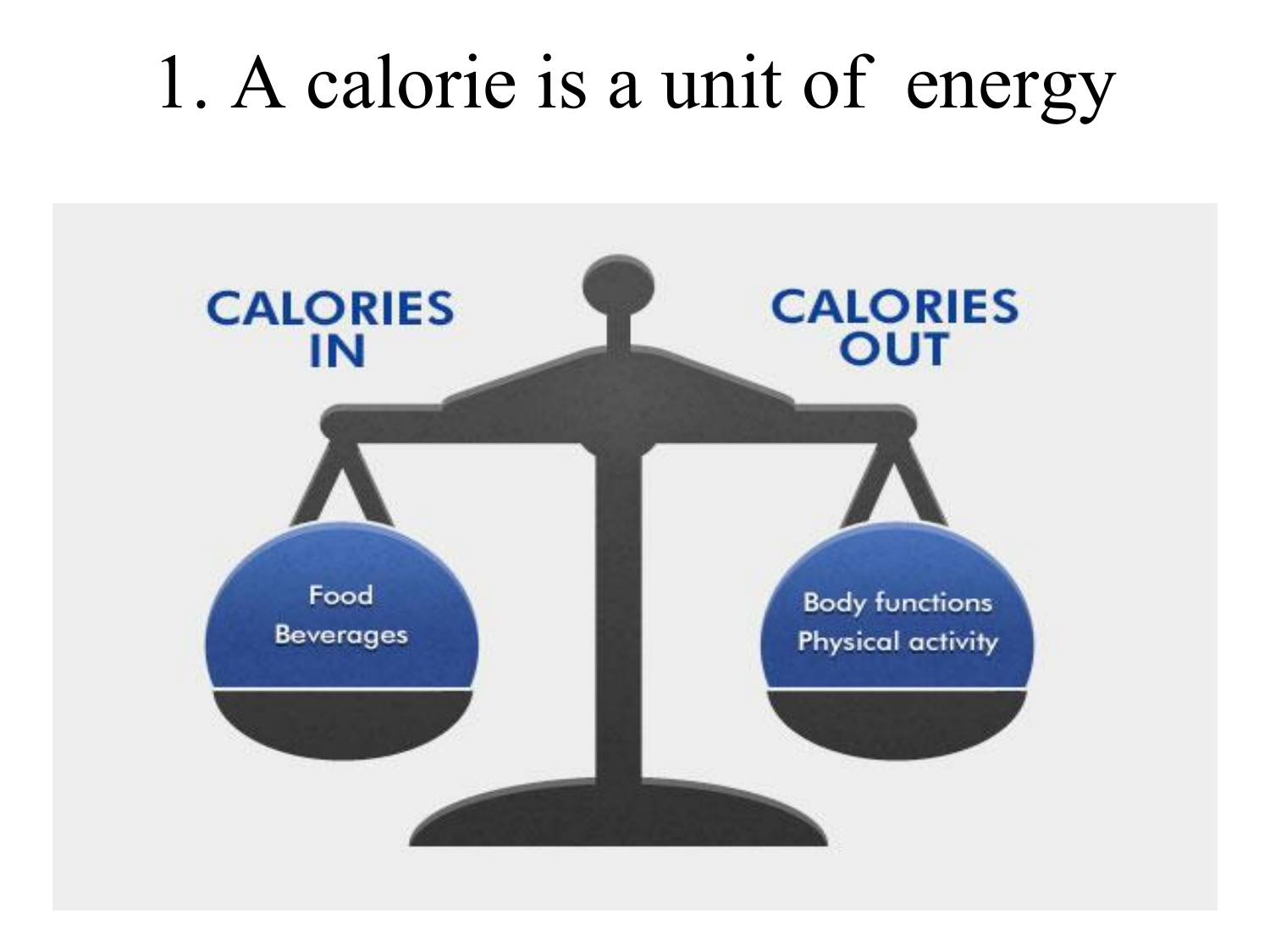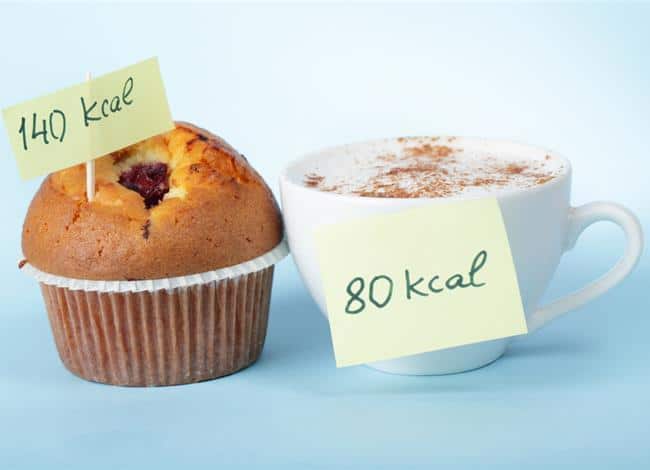44 the calorie used on food labels is equal to calories
Calories on the New Nutrition Facts Label | FDA - U.S. Food and Drug ... One package of food may contain more than one serving, so, if you eat two servings you would be getting two times the calories shown on the label. For example, if you ate one serving of the food... kilocalorie to calorie Kcal or Cal is a unit of energy defined based on the calorie and is equal to 1000 calories or 41868 kilojoules. The average American consumes about 2700 kilocalories per day. ... 143 rows A nutritional Calorie or kilocalorie is commonly used in food labeling. One 1 kilocalorie is the same as one 1 Calorie uppercase C. You can also switch to the ...
Stop Counting Calories. Here's What To Do Instead. - MSN The FDA allows the calorie content on food labels to be off by up to 20%. That means that if a food says on the label that it contains 200 calories, it could actually have anywhere between 160 and...

The calorie used on food labels is equal to calories
Are all Calories Created Equal? - Ubuntu Nutrition A kcal/Calorie is equal to 1,000 calories and refers to the heat required to raise 1kg of water by 1 degree. Thus if a slice of bread has 80 kcal, the 80 kcal would be enough energy to heat 80 kg of water by 1 degree. The food we eat contains energy in the form of macronutrients, of which there are three (protein carbohydrates and fats). Do Menu Calorie Counts Actually Change How We Eat? A pound of fat may roughly equal 3,500 calories, but there are many factors that determine how calories are processed in the body, including body composition, metabolism, stress levels, sleep and... How To Count Calories Without Labels (4 Ways) - FeastGood.com 4 Ways To Count Calories Without Food Labels The 4 most efficient ways that you can count the calories in your food without food labels are: Determine The Exact Weight of Your Food Using a Scale Use a Calorie Counting App Such as Macro Factor Utilize Google for Calories Counts Get to Know Your Portions and Use Estimations 1.
The calorie used on food labels is equal to calories. What's the difference between Kcal and Calories? In nutrition, one kilocalorie (1 kcal) is equal to one calorie (1 cal) - no conversion is needed. On the other hand, 1 kilocalorie (kcal) = 4.18 kilojoule (kJ). Therefore, to convert kilojoule to kilocalorie, divide the number of calories on the food label by 4.18 or 4.2. [Healthline] Kcal and Calories: The Difference Between Them One calorie (kcal) is equal to 4.18 kJ or 4184 joules (J) (1). To convert calories to kJ, multiply calories by 4.18. Conversely, to convert kJ to calories, divide the kJ by 4.18. For example, one medium banana (118 grams) provides 105 calories (kcal) or 439 kJ (2). IN SHORT Grams To Calories Calculator Grams to calories conversion Almost all food labels have information stating the number of total calories and grams of macronutrients, but you will rarely see the number of calories from each macronutrient. This grams to calories calculator helps you to understand the difference between calories and grams, and learn the conversion rules. How to Understand and Use the Nutrition Facts Label | FDA - U.S. Food ... That is two times the calories and nutrients shown in the sample label, so you would need to double the nutrient and calorie amounts, as well as the %DVs, to see what you are getting in two...
What Are Calories? | Live Science Calories are units of energy that a food or drink provides. You can usually find calorie counts listed on food items, and wearables like the best fitness trackers allow you monitor how many... How calories are calculated: Science behind the | Live Science A calorie is a unit of energy, not a measure of weight or nutrient density. The calories you see on nutrition labels, however, are actually kilocalories, or kcals, according to the National Health... This Is How to Read a Nutrition Facts Label on the Keto Diet If you're someone who typically consumes around 1500 calories a day, then a 500 calorie food may be a whole meal. However, if you're consuming 2500 calories a day, a 500-calorie food could be a hearty snack. Another benefit of checking calorie content is that you can better make up your mind which foods are worth including at all. Why are kilojoules used on food labels? Explained by FAQ Blog Why are kilojoules used on food labels? Last Update: May 30, 2022. ... An older unit for measuring food energy is the kilocalorie, often just called calories. One calorie is 4.2 J. ... For example, an elephant needs around 200,000 kJ daily, and a cat about 800 kJ.
Difference Between Kcal and Cal - Ask Any Difference The nutritional values of the food items are generally recorded and then mentioned in the labels on the packet. They symbolise the energy content of that food item. One kilocalorie is equal to one thousand calories. This means, to convert a kilocalorie into a calorie, you just need to multiply the numerical value of the kilocalorie by 1000. Kcalories vs. Calories: What is the Difference? - Doug Grows There are a few exceptions as some places measure their food labels with kcals or kJ. If you are wanting to convert food labels here is some help! 1 calorie is equal to 1 kcal IF converting food labels. 1 calorie is equal to 4.18 kJ. I hope you found this article helpful in answering any questions you had! How To Track Calories With MyFitnessPal | Men's Fitness UK Added to this, Charlotte Fisher, nutritionist at Marvin's Den, says that there are often inaccuracies on food labels: "There's a 10% tolerance on food labelling, and even seasonal variation in the energy content of your food. These factors make tracking a 'best guess' at most." Always log liquid calories on MyFitnessPal ... Nutrition Facts: How to Read Nutrition Labels - Greatist Common nutrition terms to know. The Food and Drug Administration (FDA) regulates terms used on food labels. Here are some to look for: Calorie-free: Less than 5 calories per serving. Low calorie ...
How is the caloric value of food determined? | Office for Science and ... A food calorie is actually a "kilocalorie.". In other words it is the amount of energy needed to raise the temperature of one liter of water by one degree. Originally, the calorie content of a food was measured in a calorimeter. A known amount of food, which has had its water content evaporated, was placed in a container surrounded by a ...
How to Calculate Kilocalories | livestrong A kilocalorie (kcal) is the same as one large calorie, which is equal to 1,000 small calories. But small calories are uncommon in everyday use — large calories, or kilocalories, are what you're used to seeing on food labels and in nutrition and exercise recommendations.
Food Label Reading - What You Need to Know - Drugs.com Low means you can eat several servings per day of this food and not go over the suggested daily value for that nutrient. The word low is used to describe fat, calorie, and sodium contents of foods. Low fat means less than or equal to 3g total fat per serving. A low calorie food has 40 calories or less per serving.
Why does australia use kj instead of calories? This is the metric term for calorie. Kilojoules and calories represent the same thing. One calorie is about four kilojoules. ... Since one Cal is equal to 4.184 kJ, you just need to divide the kilojoule value by 4.184 to get the Cals equivalent. Dividing by 4.184 is the same as multiplying by 0.239. ... Nutritional food labels in most countries ...
How Many Calories Is Fried Rice? - Cooking Tom Fried rice has high calorie and alcohol content. A typical serving has 464 calories and 4.45 g of alcohol. A typical serving of fried rice has 400 calories and 2.5 g of alcohol. To help reduce the number of calories and alcohol in your diet, consider using low-fat options, such as brown rice.
How Many Calories In A Totino'S Pizza? - Cooking Tom A small Totino's pizza contains 330 calories, 6 grams of fat, 2 grams of protein, and 19 grams of carbs. The Totino's pizza can be made with your favorite toppings or even a Totino's pizza can be customized with your favorite topping. A medium Totino's pizza contains 420 calories, 9 grams of fat, 4 grams of protein, and 26 grams of carbs.
The pros and cons of calorie labeling - AgriLife Today In response, food manufacturers and retailers are now legally required to add calorie information to their labels so that consumers can make informed choices regarding calorie intake. "However, the relevant literature on the effectiveness of offering lower-calorie alternatives has shown mixed results," Palma said.
How To Count Calories Without Labels (4 Ways) - FeastGood.com 4 Ways To Count Calories Without Food Labels The 4 most efficient ways that you can count the calories in your food without food labels are: Determine The Exact Weight of Your Food Using a Scale Use a Calorie Counting App Such as Macro Factor Utilize Google for Calories Counts Get to Know Your Portions and Use Estimations 1.




Post a Comment for "44 the calorie used on food labels is equal to calories"